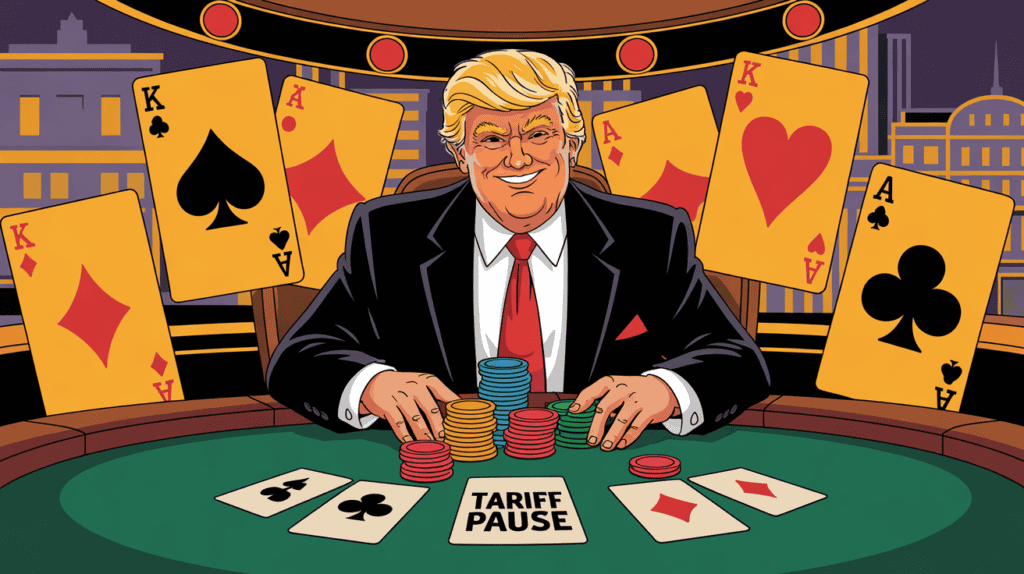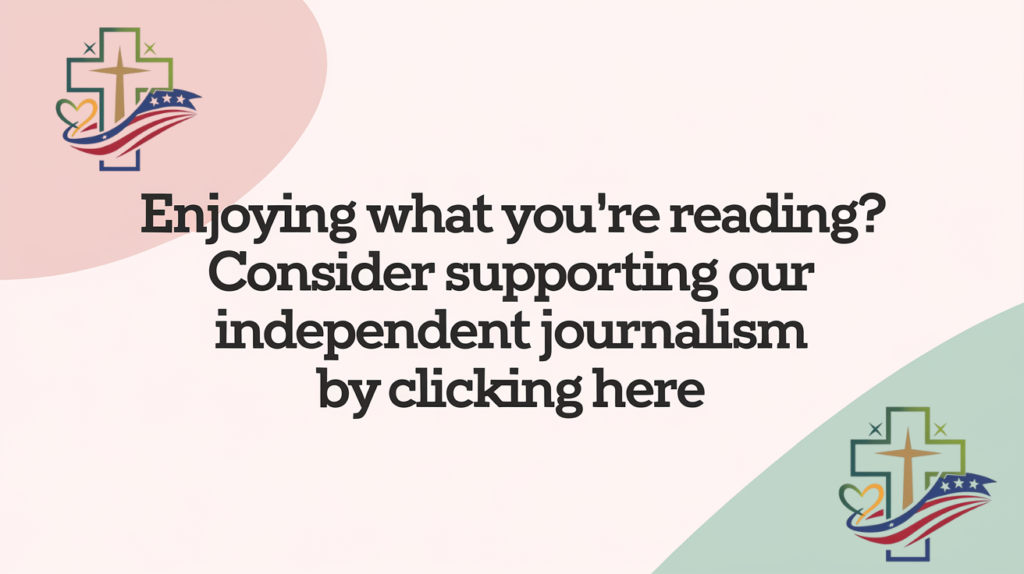Donald Trump’s tariff plan has stirred quite the debate, dividing opinions across the globe. On one hand, some see his aggressive moves as potentially brilliant tactics to renegotiate trade deals in America’s favor. By resetting the table, Trump might be aiming to secure better terms for the country, possibly resulting in stronger economic positions despite short-term disruptions.
Conversely, these tariffs are seen by many as unsettling, given their potential to destabilize markets and strain relationships with key trading partners. The real question remains: is this approach a masterstroke in economic strategy, or could it backfire, leading to significant financial and diplomatic setbacks?
Amid these tensions, the world watches closely. Observers are eager to see whether Trump’s gamble will reward the U.S. with better deals, or leave it dining alone with fewer allies by its side. Investors and leaders alike are kept on edge, wondering whether to brace for impact or prepare for potential gains.
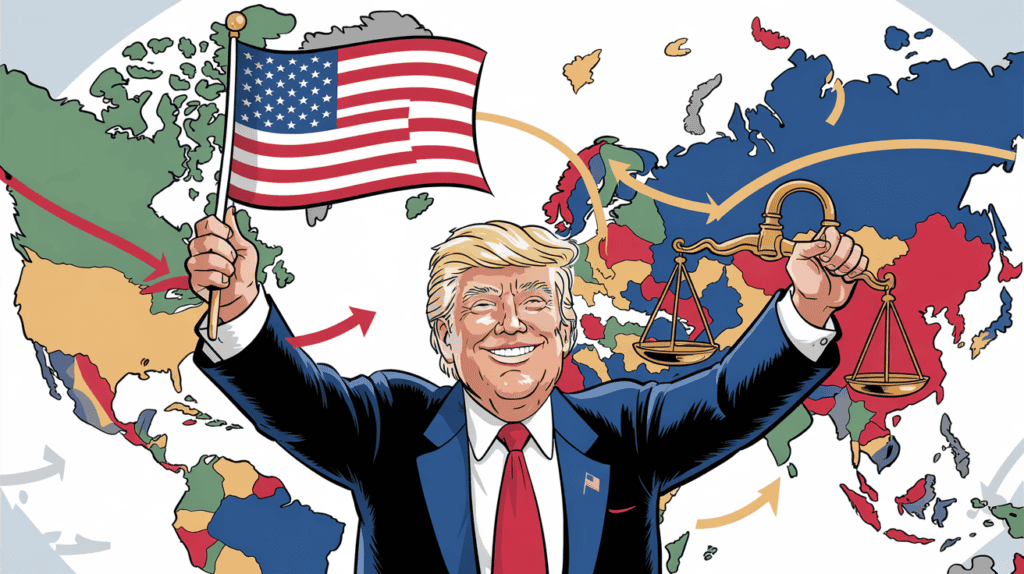
1) “The boss hates trade deficits” – An intriguing start!
Trade deficits are a hot topic, especially when it comes to Donald Trump’s economic policies. He has expressed dislike for trade imbalances, which he sees as harmful to the American economy. By targeting deficits, some might say he’s putting America first and protecting domestic businesses.
Yet, is it as straightforward as it seems? Critics argue that focusing solely on trade deficits might overlook the bigger picture. They suggest that deficits aren’t always harmful and can sometimes benefit consumers by offering more goods and services at lower prices.
Supporters of Trump’s stance believe that reducing trade deficits could foster local job growth. For example, industries like steel and manufacturing might see a boost if tariffs lead to increased domestic production.
Others, however, caution against potential negative effects on international relations. Imposing tariffs might strain connections with longstanding allies and ignite trade wars. Imagine the cost of your favorite imported items skyrocketing. Could this lead to more harm than good?
While the debate continues, many wonder if Trump’s approach might be part of a broader strategy. Is the aim to bring about a new era of international trade, or is it simply a risky gamble? The jury is still out, and both sides have compelling arguments.
2) Team of sycophants? Now that’s a fun one.
Critics claim that Trump’s administration is filled with yes-men who only echo his views. This belief suggests that his decisions on tariffs might lack critical evaluation. Are these advisors offering genuine advice, or just nodding along? When everyone agrees, who’s left to play the devil’s advocate?
A team agreeing on everything might speed up decision-making. Supporters argue this unity streamlines processes. Moreover, having a team in sync can create a clear direction. But can such an approach lead to well-rounded decisions, or does it risk blind spots?
Those skeptical of Trump’s team say differing opinions are valuable. Diverse viewpoints can highlight potential issues and solutions. Yet, others argue that too many voices can lead to confusion or delays. Is it better to have a focused, unified front or a mix of ideas?
Furthermore, critics worry about accountability. If things go wrong, is it too easy for the team to point fingers elsewhere? Balancing loyalty with challenging discussions is crucial. Is this balance present in Trump’s inner circle, or are they too content to just go with the flow?
3) Ticking a Box or Pushing an Agenda?
Trump’s tariff plan has raised eyebrows, and many question if it’s just about ticking a political box or pushing a deeper agenda. On one hand, some argue that these tariffs are simply a move to fulfill campaign promises. Trump campaigned on revamping trade deals, and tariffs appear as a direct way to demonstrate action.
Is it more than just a checkbox, though? Others suggest the tariffs might be part of a strategic push to alter global trade dynamics. This aggressive posture could be intended to create leverage, aiming for substantial changes in trade relationships. The criticism from economists adds to the debate about the tariff policy’s effectiveness.
Some believe it’s a gamble to shift economic power back to the United States. Meanwhile, skeptics view it as a blunt tool that might damage international ties. As with many of Trump’s decisions, the true intent can be hard to pin down. Is this a well-planned strategy to reset how trade works, or is it a short-sighted attempt to gain quick political points?
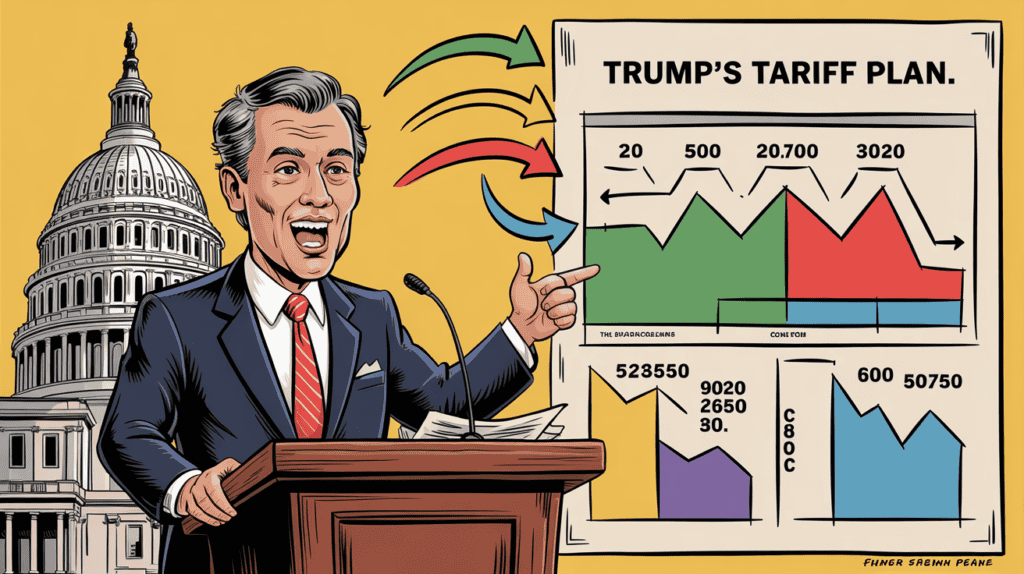
4) Rep. Donald Beyer’s math conundrum
Rep. Donald Beyer has been quite vocal about the perceived flaws in Trump’s tariff strategy. He claims there’s a problem with the arithmetic behind the tariff plan. Beyer argues that the benefits might not add up as expected, suggesting errors in calculation that could affect the working class.
Critics of Trump’s tariffs point out how they might harm certain sectors. Some believe these measures lead to higher costs for consumers, which isn’t the intended goal. Beyer’s focus on the numbers highlights a concern that the strategy might not be as beneficial as Trump predicts.
On the flip side, supporters of Trump’s tariffs argue they might encourage domestic growth. They think these policies could strengthen U.S. manufacturing by reducing reliance on imports. While Beyer and others worry about the math, proponents believe the potential benefits can outweigh these concerns. So, is Beyer right, or could these tariffs truly bring about economic gain? The debate continues, and only time will tell if the math works in America’s favor.
5) PANICANS: A party for the ‘weak and stupid’?
The term “PANICANS” has emerged in political discussions related to Trump’s tariff strategies. This concept mocks those he perceives as fearful or incompetent. Critics argue that using such terms is divisive and counterproductive. Calling others “weak and stupid” might alienate potential allies and add more tension to the already fraught political climate.
On the flip side, some supporters believe this branding highlights a refusal to capitulate to fear. They might view it as a call for strength and resilience in a tumultuous economic environment. By coining such terms, they feel it rallies supporters who believe in Trump’s vision and see themselves as part of a brave, steadfast movement not swayed by panic.
This polarizing rhetoric can appear as a double-edged sword. While it may unite a base, it can also deepen existing divides. People who feel insulted by the term may dig in their heels further against the administration’s policies and rhetoric. Emotions aside, Trump’s use of language continues to fuel debates and shape perceptions on the complex stage of international trade and diplomacy.
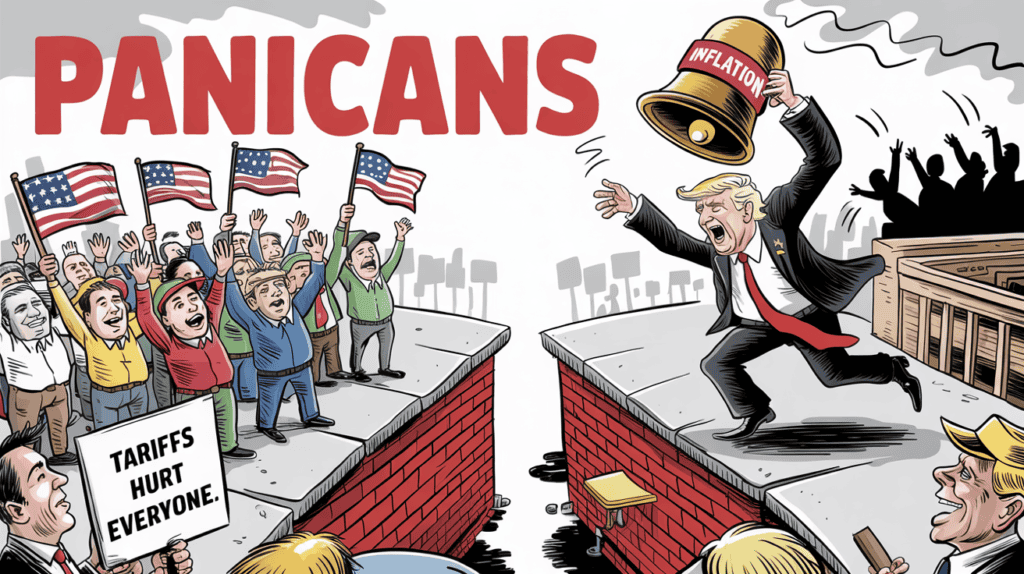
6) Trump vs. Economists: A Never-Ending Saga
Trump’s tariff plans have often sparked debates with economists. While he claims these tariffs reset the global table for trade, experts largely express doubts. Many economists argue these tariffs harm international relationships and raise prices for consumers. Is Trump’s approach a stroke of genius or a risky gamble?
Economists point out that tariffs disrupt global supply chains, leading to increased costs for businesses. Critics emphasize that this ultimately results in higher prices for everyday goods. Yet, Trump’s supporters argue that his plans aim to bring manufacturing jobs back to the United States. Could this protect American workers, or is it just wishful thinking?
Some of Trump’s backers see him as a master negotiator. They believe his tough stance could force other countries to agree to better trade deals. On the other hand, many economists warn that these tactics can lead to trade wars with negative long-term consequences. How long will this tug-of-war last, and what will it achieve in the end?
The disagreement between Trump and economists highlights a broader clash of ideologies. It’s a dance between those who seek bold actions and those who warn of caution. Will these differing views find a middle ground, or is the saga set to continue?
7) Inherited economy or self-made success?
Donald Trump often touted the economic successes during his presidency. Some argue these were largely due to an economy he inherited from Barack Obama and Joe Biden. The economic policies of his predecessor laid a foundation that continued to grow—job numbers improved, and the stock market soared. Would this have happened without significant groundwork already in place?
On the flip side, Trump implemented tax cuts and deregulation, actions he claimed spurred economic growth. His supporters view these measures as bold steps that invigorated businesses and the market. Could these changes have been the catalyst for the economic performance during his tenure?
Critics argue that while headline numbers looked good, not all benefited equally from these changes. Wage growth for many remained sluggish, suggesting that the benefits were not widespread. Did his policies represent a boost for everyone or just a select few?
In considering Trump’s impact, one must weigh these aspects. Did he simply keep the train on its tracks, or did he drive it to new destinations? Each perspective provides different insights into whether his economy was inherited or a result of his own strategies.
8) ‘Genius’ or Just Genius Marketing?
Could it be that Trump’s tariff plan is less about global economic strategy and more about marketing? He’s known for his flair in creating dramatic narratives. This strategy might be another way to grab attention. Some see it as a classic case of all publicity being good publicity.
On one hand, people say Trump’s approach is genius marketing. His tactics keep the media buzzing, making sure he stays in the spotlight. This could bolster his image among his supporters. They might view his boldness and strong-arm tactics as proof of his commitment to changing the status quo.
On the flip side, critics argue this is more about style than substance. They contend that while the attention is there, the actual benefits to the economy are debatable. Isn’t it risky to gamble with global trade just for headlines?
In the end, whether it’s true genius or just marketing magic is still up for debate. Either way, Trump knows how to keep people talking.
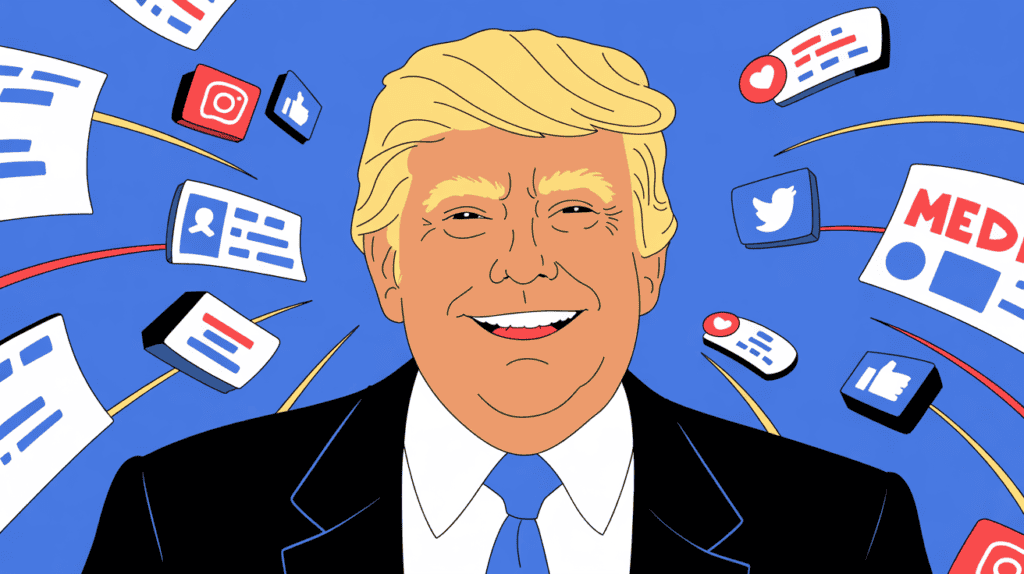
9) Suspending tariffs: A classic Trump U-turn?
Donald Trump’s decision to pause some tariffs has sparked a wave of opinions. Is this a typical Trump move or a strategic rethink? Trump is known for his high-stakes strategies, often acting as if he’s playing a game of poker with the world.
Some see this pause as a way to keep everyone guessing. It might be a tactic to extract more favorable terms from trading partners. After all, he’s not a stranger to putting pressure on before walking things back. Trump has long portrayed himself as a master negotiator, unafraid to shake things up.
Critics wonder if this pause shows inconsistency or weakness. If Trump declares tariffs and then pulls back, does it send mixed signals? Some see it as a sign of unpredictability, making it harder for businesses and countries to plan.
Suspending tariffs could be a method to calm market turmoil or gain political leverage. For supporters, this step may demonstrate adaptability and pragmatism. It might be Trump’s way of keeping allies on board while renegotiating terms.
Is this pause a moment of calm before another storm? The jury’s still out, but Trump’s moves keep everyone tuned in.
10) Pathetic beliefs or strategic genius?
Trump’s tariff plan sparks a lot of debate. Some see it as a bold strategy to protect U.S. industries from unfair foreign competition. They argue that by imposing tariffs, Trump forces trading partners to play fair, granting the U.S. better deals in the long run. Is he the master negotiator who feels he’s resetting global trade rules?
Critics, though, claim the opposite. They argue these tariffs could hurt American consumers more than they help. Prices on everyday goods might soar, affecting low-income families the hardest. Is it possible Trump is taking a huge gamble, risking economic stability for a vision that might not pan out?
There’s a striking contrast in his approach. Some see a chess player plotting moves ahead. Yet others perceive a risky player, throwing dice in a high-stakes game. The clash of views is intense. Navigating through this debate raises questions about intentions and consequences. Is it all part of a grand plan or just misguided tactics causing more harm than good?
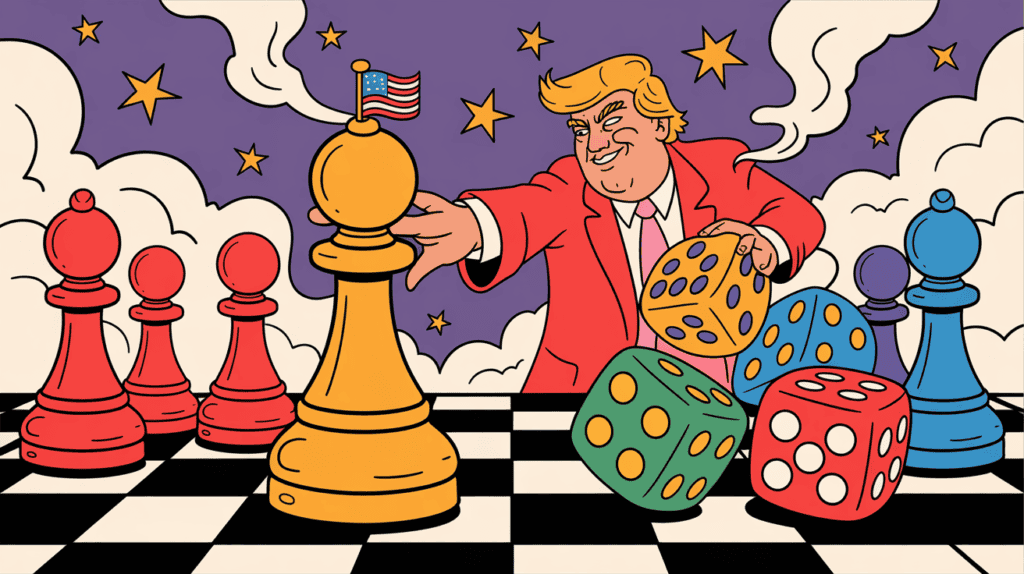
Understanding Trump’s Tariff Plan
Donald Trump’s tariff plan involves significant changes to how the United States engages in international trade. The focus on “resetting the table” marks a shift toward a more protective stance, aiming to renegotiate trade deals. This plan has deep roots in the history of tariffs, tracing back to older economic strategies.
The Concept of ‘Resetting the Table’
Trump frequently refers to “resetting the table” as a way to frame his aggressive tariff strategy. It suggests a fresh start in trade negotiations, discarding old agreements in favor of new deals that Trump argues will benefit the U.S. This approach is bold and risky, stirring debates about its potential outcomes.
For some, this tactic means creating leverage against trade partners. It’s a strategy where being tough might squeeze out better terms for American workers and businesses. On the flip side, such tactics can strain diplomatic ties and introduce uncertainty into global markets, leaving investors nervous and economies wobbling.
Historical Context of Tariffs
Tariffs are not new. Historically, they have been tools for protectionism, aimed at guarding domestic industries from foreign competition. The use of tariffs can trace its roots back to early American economic policies, which often relied on tariffs to protect burgeoning industry.
In Trump’s view, leveraging tariffs harkens back to those historical strategies. Yet, the realities of the global economy today are far more complex. Economists warn that tariff wars could boomerang, hurting American consumers through higher prices. The impact on international relationships and trade dynamics can echo through the global economic landscape, raising questions about whether the strategy is outdated or innovative.
Economic Impacts of The Tariff Plan
The economic ripple effects of President Donald Trump’s tariff plan reverberate through various sectors. Key areas include trade relationships and stock market dynamics, each influenced by these complex policy shifts.
Effects on Trade Relations
Trump’s tariffs are like a double-edged sword. On one hand, they aim to protect American industries by making foreign goods more expensive. This might boost domestic production and jobs. For example, tariffs on steel could help U.S. steel manufacturers compete better by increasing imports costs. Yet, there’s turbulence here too. Many countries react by imposing their own tariffs on U.S. products, sparking trade wars.
Such retaliation can harm American exporters. For instance, farmers may struggle to sell goods abroad if faced with counter-tariffs. Trade relationships with key partners, like China and the European Union, become strained under these conditions. Affected industries may lobby for exemptions or reduced tariffs, adding another layer to the negotiation process. It’s a game of diplomatic chess where every move counts.
Stock Market Reactions
Economic policies often send waves through the stock market, and Trump’s tariffs are no exception. Initially, tariffs might cause uncertainty among investors, leading to volatile market swings. When tariffs are imposed, they can disrupt global supply chains, affecting profit margins for multinational companies. This uncertainty has historically led to short-term dips in stock indices.
Some investors, however, may perceive these policies as efforts to strengthen U.S. industry, which could eventually raise company valuations domestically. Companies that rely on imported raw materials might see billions wiped off their stock values, whereas those producing locally might benefit. Potential for increased costs might make investors jittery, asking themselves if fears of inflation are justified. It’s a rollercoaster ride in the financial markets that requires careful navigation.
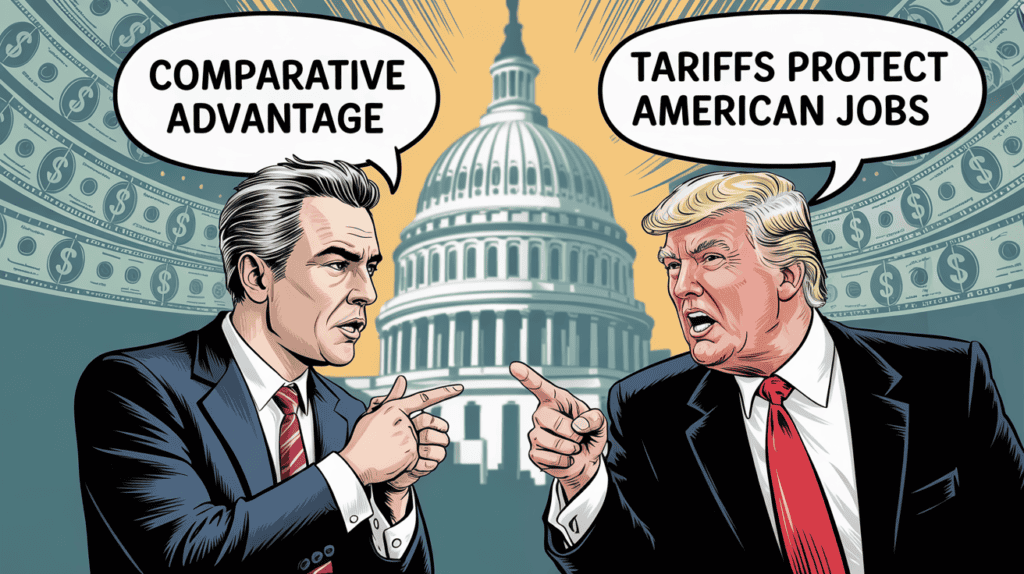
Political Ramifications
Donald Trump’s tariff strategy is stirring the political scene both at home and abroad. Domestically, it reshapes alliances, while internationally, it influences diplomatic ties and global partnerships.
Domestic Political Climate
The tariff plan has significant effects on the U.S. domestic political climate. For Trump’s supporters, these tariffs are a bold move to protect American businesses and jobs. They believe the policy gives them the upper hand in international trade, striking fear into rival economies. Critics, though, argue these actions might backfire.
Opponents inside the country worry about the potential for rising consumer costs and the impact on farmers and manufacturers who rely on imported materials. The tariffs could hurt businesses that depend on foreign goods, thereby influencing voter sentiment in upcoming elections. With the heated debates in Congress and among state leaders, the tariffs are dividing political lines, leaving those in the middle to wonder which side offers a brighter future.
International Diplomacy
International diplomacy faces challenges with Trump’s tariffs. Initially, some nations respond with counter-tariffs, which might spark a trade war. This tit-for-tat approach could strain relationships with allies. Consider the case of Canada and the European Union, both influential trade partners feeling the pinch of these tariffs. They’re reassessing their trade strategies with the U.S., potentially looking for other partners.
There remains a possibility that Trump uses tariffs as a bargaining chip in negotiations. If successful, this strategy could lead to improved trade deals, but if not, the U.S. might find itself isolated on the global stage. Diplomats around the world watch closely, wondering if these moves reflect a long-term strategy or just a temporary upheaval.

